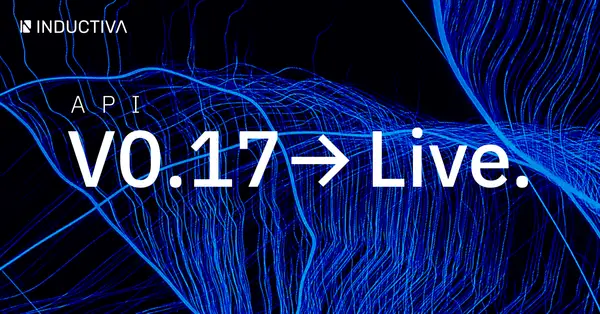In the world of Physics-ML, data is key—but who says it has to be “real”? In fields like material science or fluid dynamics, obtaining real-world empirical data for training models is notoriously challenging. It’s scarce, often incomplete, or expensive to collect. So, what’s a data-hungry machine learning model to do?
Synthetic data is a solution to fill gaps and enhance datasets too small to train ML models effectively. So, instead of relying solely on real-world data, you train your models with synthetic data generated through numerical simulation. But don’t let the “synthetic” label fool you. When done right, simulation-driven synthetic data can replicate the complexities of the real world. This makes it a powerful resource for models that need to perform in unpredictable environments. With synthetic data, you can explore edge cases—like extreme or rare scenarios—that are nearly impossible to capture in the wild.
But here’s where Inductiva makes a real difference: our API is designed to help you scale up simulations on the cloud, and it’s this scalability that transforms the way you generate synthetic data. With a range of pre-installed open-source simulators, our API allows you to scale data generation by running thousands of simulation variations, and produce the synthetic datasets your models crave—all on latest hardware. Ready to supercharge your Physics-ML models with data that matters? Let’s start cooking up some serious results.
Inductiva’s 4-Step Recipe for Generating Synthetic Data
Now that we know generating synthetic data through numerical simulations effectively fills gaps in our datasets, let’s dive in. Here’s how Inductiva’s API can help you do it.
Inductiva’s well-tested recipe:
Step 1: Set Up the Base Case
First things first, you’ll need a solid foundation—your “base case” simulation model. Think of this as your starting point, the core scenario that you’ll be tweaking and expanding upon. This step involves preparing the configuration files that model the system you’re studying. The good news? Inductiva supports a growing range of simulators, so no matter what kind of simulation you’re running, we’ve got you covered.
Step 2: Generalize the Base Case
Next, you’ll take that initial base case and “generalize” it so that you can create a large number of variations that cover a broad spectrum of both typical and more extreme potential scenarios. This is where our templating mechanism steps in, allowing you to replace certain variables in your configuration files with placeholders that you can easily adjust at runtime. This means you can script your way through endless combinations of parameters, whether you’re tweaking physics variables or any other simulation (hyper)parameters, with just a bit of Python scripting
Step 3: Benchmark Computational Resources
Now that you’ve got your variations lined up, it’s time to think about scale. Running a huge number of high-fidelity simulations can be both time-consuming and expensive, so you need to find the sweet spot between data quality, time, and cost. Inductiva’s API makes this easy by offering tools for benchmarking your computational resources. You can test different hardware setups and simulation fidelities so you can optimize your resources before you dive into large-scale data generation.
Step 4: Generate Synthetic Data in Bulk
Once you’ve set up and benchmarked everything, it’s time to scale up. Using Inductiva’s API, you can deploy hundreds of cloud machines to run thousands of variations of your base case simulation. After the simulations are complete, you’ll collect the output data for post-processing.
And there you have it—a diverse, high-quality synthetic dataset ready to supercharge your Physics-ML models using Inductiva’s API.
Bringing It All Together: Transform Physics-ML with Inductiva
With just a few lines of Python code, Inductiva’s API makes running large-scale physical simulations remarkably simple. Plus, it’s like having a bird’s-eye view of your entire operation. Inductiva’s API gives you full transparency over costs and hardware resources, empowering you to see everything happening under the hood with a user-friendly console.
Also, with a growing lineup of pre-installed and ready-to-use open-source simulators—like AMR-Wind, CaNS, DualSPHysics, FDS, GROMACS, NWChem, OpenFOAM, OpenFAST, Reef3D, SCHISM, SPlisHSPlasH, SWAN, SWASH, and XBeach—Inductiva’s API has you covered for just about any simulation challenge you can throw at it. And, if the simulator you need isn’t installed yet, just let us know—we’ll handle the rest.
For a more detailed breakdown of this process, we’ve crafted a tutorial that dives into each step, featuring a practical study from a group of researchers who used synthetic data generated from Smoothed Particle Hydrodynamics (SPH) solvers to train a Graph Neural Network (GNN) model for predicting fluid dynamics. It’s a perfect example of how our recipe can be applied to research, ultimately giving you the tools to achieve similar results in your own projects.
Curious about what else you can achieve with Inductiva’s API? Log in to our console and try it for free—uncover all the ways you can scale your simulations and supercharge your Physics-ML with Inductiva.



